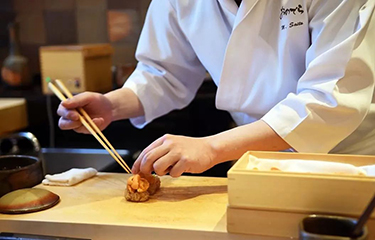New York City’s high-end sushi omakase restaurant scene hits saturation point

The closures of several high-end sushi omakase restaurants in New York City may be a sign demand for luxurious – and expensive – seafood indulgence has passed its peak.
The Michelin-starred Sushi Ginza Onodera, which opened in Midtown Manhattan in 2016 and which served a 20-course sushi-themed meal for USD 400 (EUR 367), closed 19 August. And two of the city’s other premier omakase joints – Kotaru and Sushi Noz – have been converted into more affordable versions, charging USD 140 to USD 159 (EUR 128 to EUR 146), down from as much as USD 375 to USD 495 (EUR 344 to EUR 454).
Sushi Ginza Onodera General Manager Yoko Yamaguchi said the high-end omakase scene in New York has become oversaturated.
“[There has been a] significant increase in the number of high-end omakase counters [and this market transformation] is one of the reasons we have decided to move on to the next phase,” Yamaguchi told Bloomberg.
Yamaguchi said she is now looking to open a sushi restaurant that’s more affordable to attract a broader range of guests.
Sushi Noz Co-Owner Joshua Foulquier said he is “starting to see some dilution in the market” but he said small omakase restaurants operate on razor-thin margins despite their high price tags. He said omakase restaurants require high staffing levels, can seat as few as 20 guests nightly, and generally record lower liquor sales. But most significantly, the cost of receiving premium sashimi-grade seafood flown from Japan multiple times per week adds up quickly.
“[I pay] about USD 350 [EUR 321] per pound for abalone, unagi and some other key ingredients,” he said.
Bloomberg estimates 14 high-end omakase restaurants have opened since 2016 that charge more than USD 300 (EUR 275) per meal. The priciest, Masa, charges USD 950 (EUR 871) before drinks and taxes.
But Yamaguchi, Foulquier, and Linda Wang, the operator of seven sushi restaurants in the city, said they’re all moving toward more affordable concepts. Foulquier now operates Noz Market, which has 10 seats offering a USD 140 (EUR 128) omakase and a stand-up bar selling hand rolls for USD 25 (EUR 23).
“[It’s a] great entry point to the world of high-end omakase without the intimidating price tag,” Foulquier said.
Wang said she keeps all of her menu prices under USD 110 (EUR 100), calling omakase meals costing USD 400 (EUR 367) “insane.” Wang opened her first sushi restaurant, Ume, in Williamsburg, Brooklyn, in 2018, and has opened her other six restaurants in the past 18 months.
“I wanted an omakase-quality sushi restaurant that people like me – at that time 23 years old and fresh out of college – could afford,” she said. “[The cost] is just not realistic for most people.”
Photo courtesy of Sushi Ginza Onodera






Share